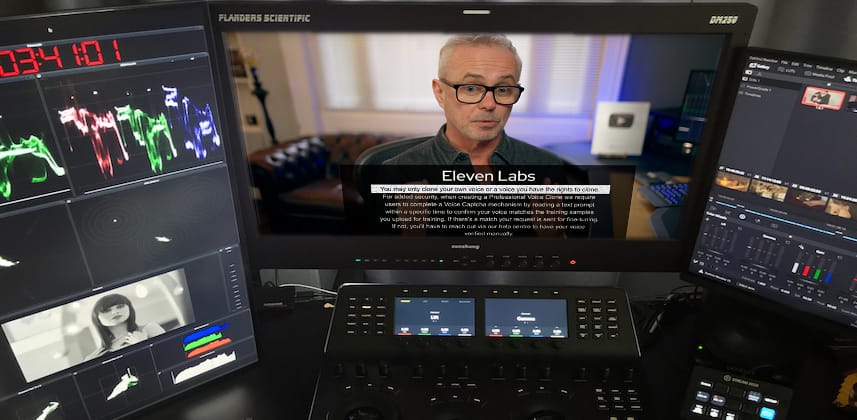With Christmas and the New Year falling on a
Wednesday, ya gotta choose which weekends you’re taking
off.
This Newsletter will be off the next two
Sundays, returning on 5 January 2025.
I wish you
all a Merry Christmas and a Happy New
Year!
Kicking off this week’s Newsletter is an
extended From The Publisher…
Samsung
seems to be revitalizing its Onyx direct-view LED
cinema screens. There are about 50
of these installations worldwide. After a splashy
introduction in 2019, to my eyes, the rollout seemed to
stall, with many of those installations disappearing.
Earlier this year,
news
of a new Onyx screen in Paris grabbed my attention
as stories started popping up in my news feeds.
I’ve been curious about this technology and
wondering how well it holds up.
So,
I have asked this newsletter’s readers for their
opinions on this technology every few months.
Two weeks ago, Newsletter reader and colorist Tony Shek
said he was checking out the screen in Culver City for
Gladiator 2 and asked what I wanted to know. This is an
edited version of our discussion:
—
Tony: I just got back. The movie looked
great! It’s not as good as the first one, but I wasn’t
expecting that.
Patrick: Does the Onyx feel more or
less cinematic or immersive? Does it stress the eyes?
Tony: It felt pretty cinematic to me.
If I had to make a small comment about the contrast,
it’s that I feel like the deeper black level gives the
image a higher perceived sharpness and a higher contrast
ratio, giving the image a “cleaner” look. There
might’ve been a bit of eye strain as well, as I now have
a mild headache, but that might also have been from
watching a 2.5-hour film.
Patrick: Do you feel like you’d want to
create content for the Onyx
screen?
Tony: As much as it would make me want
to create content for Dolby Cinema. It’s a gorgeous
screen, and the deep black levels are something that
seems to be nice to have.
Patrick: Or does it feel like a
gimmick?
Tony: It didn’t feel gimmicky at all.
It was a pretty solid experience. Nothing about the
screen really brought me out of the movie.
Patrick: If you know a feature has been
mastered to the Onyx, will you make the effort to view
it on Onyx, as I like to do for Dolby Cinema? (I rarely
go to non-Dolby screenings anymore)
Tony: My big caveat is that the Onyx
theatre is 15 minutes away from my house and cheaper
than Dolby cinema screens ($15 vs about $20-25 for
Dolby)
The overall experience was that the picture quality was
really great and comparable to watching something on
Dolby Cinema. Nothing really broke immersion. Also, I
didn’t see the sloppiness when fading up from black I
saw when I watched Dune 2 on that screen, so maybe that
was another issue.
I do think they used the 108 Dolby cinema master for
this, but the deeper blacks on the Onyx screen have
added a bit to the contrast. I read somewhere that Pixar
movies now have a 300-nit version mastered for Onyx.
I’ll try to catch one next time they release one.
—
Tony – Thank you for writing in and
sharing your thoughts! If anyone else has thoughts on or
insights into this display, please reach
out.
I’ll see you in 2025.
Happy Grading!
Sincerely,
Pat
Inhofer
Chief Photon Wrangler,
Publisher
MixingLight.com
PS
– If you find an item you think should be in this
newsletter,
send me an
email with a quick note about it.


